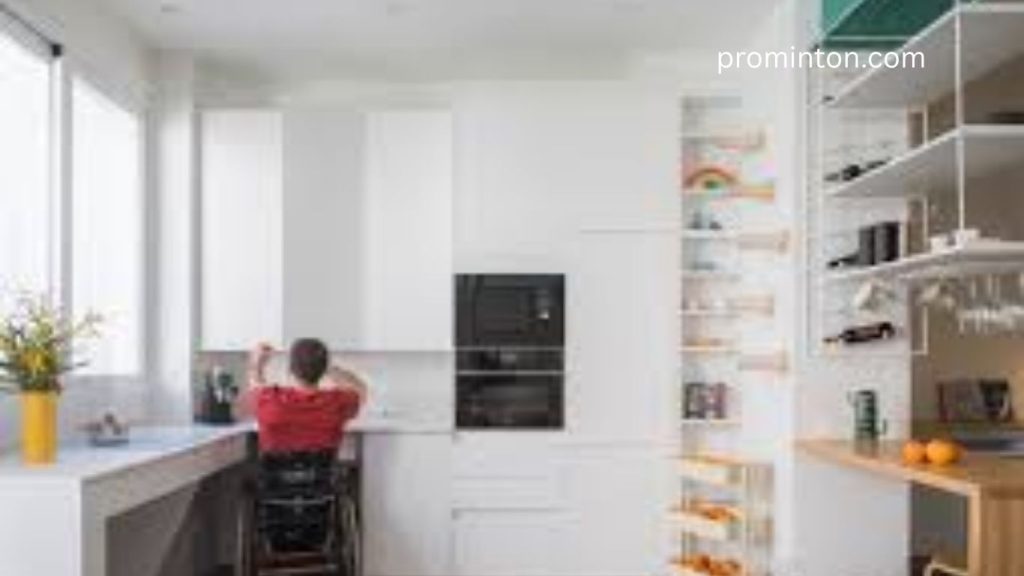Space has become a precious commodity in many of the world’s fastest-growing cities—a reality that is increasingly difficult to ignore. Megacities such as Tokyo, Shanghai, Mumbai, Mexico City, and São Paulo host populations exceeding 20 million, while other urban centers in Asia and Africa continue to grow at unprecedented rates. Delhi, for instance, is on track to become the most populous city by 2028 if current trends persist. As urban areas expand, housing and interior design face new pressures: apartments shrink, furniture adapts, and daily routines adjust to high-density environments. This shift goes beyond mere square footage; it signals a fundamental change in lifestyle. Spaciousness is no longer guaranteed—every corner now carries both spatial and commercial significance, and the kitchen has emerged as one of the most challenging and essential elements in modern housing design.
Since the mid-20th century, average dwelling sizes have steadily declined. In the United States, the Housing and Home Finance Agency noted that the average number of rooms per home fell from 4.8 to 4.6 between 1940 and 1950. Today, compact apartments measuring as little as 40 m² are common in many cities worldwide, requiring designers to meet all functional needs within significantly reduced space. Adapting to these constraints requires creative approaches that optimize efficiency without sacrificing comfort or aesthetics.
Hybrid Functionality for Compact Living
As living spaces shrink, kitchens increasingly merge with other areas of the home. Dining, working, and socializing often occur within the same footprint, driven by a need for both efficiency and cohesion. Open-plan designs and multifunctional furniture remove traditional boundaries, creating spaces that naturally accommodate diverse activities. A single kitchen can now serve as a cooking area, workspace, and social hub, reflecting a shift in how households operate in dense urban environments. This hybrid functionality prioritizes adaptability, ensuring that even the smallest spaces can support a wide range of daily activities.
Flexible Interiors with Modular and Mobile Elements
Modular and mobile kitchen components have become essential in compact homes. Folding tables, retractable counters, and storage units on casters allow residents to reconfigure layouts quickly and effortlessly. Built-in organizers help manage utensils and supplies while concealing waste, keeping the area both tidy and functional. Beyond practicality, these solutions treat the kitchen as a dynamic space capable of evolving throughout the day. Flexibility ensures that limited areas can accommodate cooking, dining, socializing, or working, adapting seamlessly to changing household routines.
Vertical Utilization in Small Spaces
High ceilings and vertical volume present opportunities to maximize kitchen functionality without expanding the floor plan. Mezzanines, suspended shelves, and overhead storage systems transform unused vertical space into valuable real estate. Rather than seeing tall ceilings as empty or wasted, designers now leverage height to organize essential functions efficiently. This vertical approach allows small apartments to feel spacious while maintaining all necessary amenities, demonstrating that smart design goes beyond horizontal dimensions.
Smart Storage Solutions
Storage remains a defining challenge in compact kitchens. When horizontal space is limited, designers turn to vertical and unconventional storage solutions. Tall cabinets, wall-mounted shelving, and even false floors allow for the efficient use of otherwise overlooked areas. These strategies increase storage capacity without reducing the livable floor space, keeping kitchens organized and visually uncluttered. Smart storage not only enhances functionality but also supports flexible, comfortable living by ensuring that essential items are accessible yet discreetly stored.
Hidden Functionality for Minimalist Living
Maximizing space often involves concealing certain kitchen elements. Built-in appliances, monolithic cabinetry, and continuous surfaces allow kitchens to blend seamlessly into the surrounding interior. Hidden functionality emphasizes clarity and minimalism, preserving visual harmony while maintaining full usability. By integrating essential components discreetly, designers create environments that are both practical and aesthetically streamlined, reflecting a broader trend toward adaptable, purpose-driven domestic spaces.
Rethinking Urban Living Through Kitchen Design
These five approaches illustrate how urban growth and social change influence domestic life. Compact kitchen design is not just about space optimization—it challenges us to reconsider fundamental questions: How much living space is truly necessary for daily life? How can homes be both functional and comfortable in high-density settings?
Each design strategy highlights the balance between intimate, personal spaces and the complexity of urban environments. Smaller homes make essential elements—natural light, ventilation, access to utilities, and waste management—more apparent, while also revealing broader societal forces, such as land scarcity, urban policy, and population density. The kitchen, often overlooked as a design challenge, becomes a lens through which these forces are made tangible.
Ultimately, these innovations demonstrate that spatial constraints can inspire creativity rather than limit it. Compact living encourages multifunctionality, flexibility, and efficiency, shaping homes that meet modern needs without compromising style. By rethinking the kitchen, designers are not only solving practical problems but also exploring how urban life reshapes our relationship with domestic space.
The Broader Implications
Compact kitchens offer more than just clever design solutions—they reflect the realities of contemporary urbanization. By integrating vertical space, modular components, and hidden functionality, designers address the pressures of population growth, land scarcity, and evolving lifestyles. These interventions condense not only space but also essential questions about the role of housing in supporting human activity.
Observing how these designs function in high-density environments provides insight into the silent impact of urban sprawl. Every square meter becomes significant, emphasizing efficiency, functionality, and adaptability. The modern kitchen embodies the intersection of culture, technology, and spatial intelligence, showcasing how design can respond to both immediate needs and long-term urban trends.
In essence, the compact kitchen is a microcosm of contemporary living. Its evolution highlights the ongoing dialogue between personal space and societal pressures, demonstrating that even the smallest areas can foster innovation, comfort, and efficiency. By embracing hybrid functionality, flexible layouts, vertical utilization, smart storage, and hidden solutions, designers are shaping the kitchens—and, by extension, the homes—of the future.
As cities continue to grow, these strategies will become increasingly critical. They provide not just practical solutions but also a vision for how urban living can adapt intelligently and elegantly to the constraints of modern life. In every corner of a compact kitchen lies the potential to optimize living, enrich daily routines, and transform the way we think about space in the contemporary urban landscape.
Frequently Asked Questions:
What is meant by the “new spatial economy” in kitchen design?
The “new spatial economy” refers to maximizing limited urban living space through innovative design strategies. It focuses on efficiency, multifunctionality, and adaptability, ensuring that every square meter serves a purpose.
How are modern kitchens adapting to smaller living spaces?
Contemporary kitchens use modular furniture, hidden storage, vertical space utilization, and hybrid layouts to maintain functionality and style, even in compact homes.
Why is the kitchen considered central to urban living innovation?
Kitchens combine essential daily functions with social and cultural activities. They reflect broader trends in urban density, technological adoption, and lifestyle shifts, making them a key area for innovation.
Can small kitchens remain stylish while being functional?
Absolutely. By employing smart layouts, multifunctional furniture, and thoughtful material choices, compact kitchens can be both visually appealing and highly functional.
How does vertical space improve kitchen design?
Tall cabinets, overhead shelving, and suspended storage make use of unused height, creating additional storage and maintaining a spacious feel even in small floor areas.
Are these kitchen design trends suitable for all types of homes?
While especially useful for urban apartments, many principles—flexibility, modularity, and efficiency—can be applied to larger homes, condos, or even vacation properties to enhance usability and aesthetics.
How do these designs impact daily living?
They simplify organization, reduce clutter, and make daily routines more efficient, ultimately improving the quality of life in high-density urban environments.
Conclusion
As urban living spaces continue to shrink, kitchens are evolving from purely functional areas into hubs of innovation, efficiency, and style. By embracing hybrid functionality, modular and mobile elements, vertical utilization, smart storage, and hidden features, modern kitchen designs redefine how we experience daily life in compact homes. These strategies not only optimize space but also enhance comfort, flexibility, and aesthetic appeal, reflecting the broader trends of the new spatial economy. Ultimately, the modern kitchen demonstrates that thoughtful design can transform even the smallest areas into inspiring, multifunctional spaces that support the demands of contemporary urban living.



